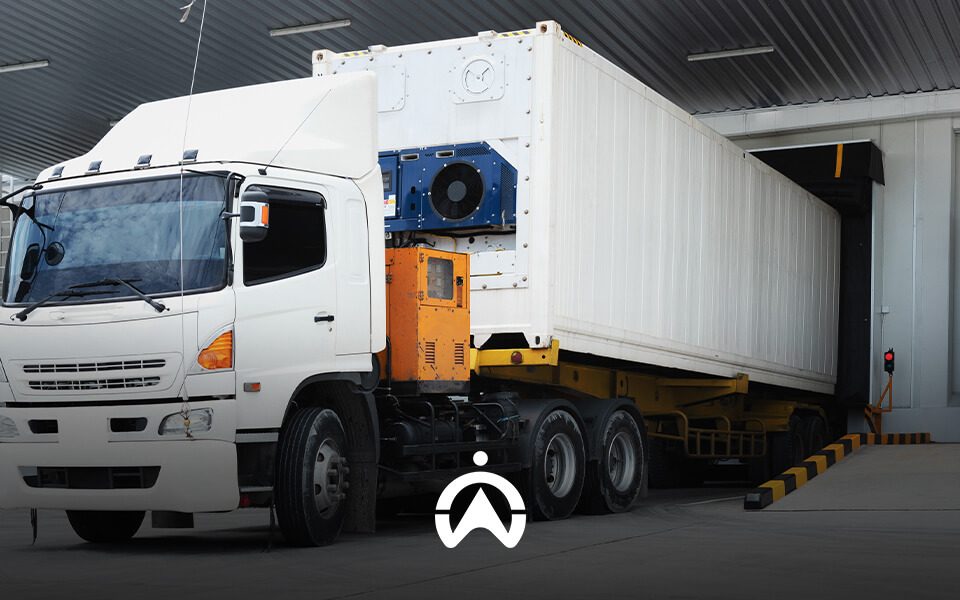5 Ways to Improve On-Time Delivery Rates and Otif
With increasing demand from the consumer sector, the pressure on business fleets in the logistics or supply-chain industry has also intensified. This is simply because consumers have more expectations of retailers, and the outturn is that retailers have even higher expectations of your fleet’s delivery performance.
Let’s show you how to enhance your fleet management with Cartrack delivery to ensure on-time deliveries in full every time.
On-Time Delivery Rates and OTIF explained
On-time delivery rates and On-Time in Full (OTIF) are popular metrics that manufacturers and retailers use to measure delivery performance within their supply chain and rate their logistics and vendor partners.
With increasing consumer demand due to e-commerce businesses, online food and grocery delivery or even just the variety of products consumers expect from retailers; transportation and logistics companies cannot afford any more delivery delays. Neither can businesses with in-house fleets that move goods from manufacture or farm to store.
Here are some global stats on consumer demand from Meteor Space that paint a clear picture of consumers’ changing behaviour:
- 76% of customers confirmed that fast shipping positively influences their shopping experience
- 88% of consumers are more willing to purchase from a store that offers free shipping
- 83% of online shoppers want regular customer support and communication on their order status
- 95% of online shoppers expect all shipping issues to be resolved while in transit
- 62% of online US customers believe fast delivery is the most important aspect of customer experience.
The online commerce industry in South Africa has also experienced a rapid increase since the COVID-19 pandemic and lockdown. It is estimated that by 2027, this market will be valued at $7.9 billion as online food delivery, clothing, and other retail shopping have dramatically surged.
According to Statista and other sources:
- Over 70% of South African shoppers want home deliveries for their purchases.
- Over 22% of online consumers consider clear communication on expected delivery timing to be a key factor in a digital shopping experience’s quality (or lack thereof).
- 17% of customers will abandon a brand because of long delivery waiting times.
Meeting consumers’ new delivery demands means more businesses in transportation and logistics, and businesses with a complete in-company supply chain must adjust and focus on delivery time demands. That’s why on-time delivery rates and OTIF are critical; let’s tell you more about how they work.
On-time delivery rate
The on-time delivery rate, first and foremost, calculates a business’s ability to meet customer expectations for delivery time. It is used by e-commerce businesses and retailers in last-mile delivery to determine how fast they are meeting customer orders.
38% of online retailers are concerned about meeting these quick delivery expectations from customers at the low shipping costs their customers expect. Businesses can also use the on-time delivery rate to calculate and evaluate their transportation and delivery service partners when they outsource this service.
On-time in full delivery
OTIF generally refers to a supplier’s ability to deliver the full quantities ordered within the prescribed or agreed-upon delivery time. Suppliers and distributors often face challenges that disrupt timely delivery, such as vehicle breakdowns, traffic congestion or, in South Africa, public protests and demonstrations. Our unique challenge with load shedding can also cause delays and disrupt deliveries.
There are no standard OTIF expectations; therefore, the methods to improve your company’s delivery rate or quality depend more than anything on the steps you take to improve your fleet’s delivery performance.
More businesses are seeking customer-level experience from their logistics service partners. This means that they expect better communication from suppliers and distributors, delivery visibility to clients and precise delivery time communication.
Focusing on improving OTIF can help secure customers and enhance your transportation and logistics company’s reputation.
The stakes are high for your delivery fleet’s performance, and unfortunately, improving your on-time delivery rate and OTIF is not always an easy task because it relies on effective collaboration between fleet managers and drivers. Other external factors such as products being out of stock, warehouse and carrier issues, fuel price increases, protests, demonstrations, and staff shortages, all disrupt the process. Ultimately, problems at any stage in the delivery link can cause delays.

5 ways to improve on-time delivery rates and OTIF
On-time in full (OTIF) is the standard all logistics providers should strive for. Here are some smart strategic ways to improve your fleet’s delivery performance. We’ll guide you on how to apply these steps with real Cartrack case studies based on a carrier company we worked with and helped achieve improved delivery rates.
1. Gain real-time fleet and driver visibility with GPS tracking
Fleet tracking and driver monitoring are critical parts of fleet delivery performance and can help you achieve and improve your on-time deliveries. When fleet managers lack visibility on their fleet, they struggle to monitor drivers’ productivity, see which drivers are available for a delivery task, identify causes of delivery delays, and calculate their on-time delivery rate.
Consider a company like The Courier Guy—a leading South African courier services company that started in 2000. They have over 2,200 fleet vehicles and, with increasing consumer demand, are set to expand their fleet even more over time. With the growing number of drivers, customers and vehicles, it can be challenging for any courier company to manage every part of their fleet.
Whether you have a fleet of 20 vehicles or over 2,000 vehicles like The Courier Guy, having real-time fleet and driver visibility is one of the best ways to improve your deliveries.
Cartrack’s telematics and easy-to-use fleet management platform provide The Courier Guy with real-time fleet visibility and driver monitoring that helps them eliminate time-wasting and ensure packages arrive safely and correctly at their customers’ doorsteps.
By addressing the lack of fleet visibility, fleet managers can:
- Accurately track each vehicle’s location: Gain a complete map overview of all your fleet vehicles and drivers to understand their activity.
- Monitor driver’s productivity: Improve driver accountability and productivity by monitoring their activity on the road. Decrease unnecessary route deviations and stops.
- Receive vehicle trip history reports: calculate their on-time delivery rate: By understanding your current delivery performance, you can easily implement these strategies to improve your delivery rate.
Real-time visibility makes it easy for fleet managers to intervene whenever necessary and proactively prevent late deliveries, ensuring a high on-time delivery rate. Immediately addressing and communicating the causes of delivery delays can help improve customer satisfaction and your business services’ reputation, but to do this, you need to make real-time visibility your new best friend.
2. Improve scheduling with delivery fleet management tools
The current shortage of drivers and the lack of capacity for deliveries in your fleet make it difficult for you to improve on-time delivery rates. In line with tracking fleet vehicles and drivers, planning and scheduling the two; adds to the difficulty of ensuring you meet your delivery date. Without the right delivery tools, fleet managers can run into scheduling challenges like:
- Improperly matching special delivery loads with unqualified drivers or unequipped vehicles.
- Manually logging and scheduling deliveries including recurring orders.
- Unclear estimated time of arrival (ETA).
- Inability to make changes to a delivery or communicate changes.
Whether your fleet is inbound, moving deliveries between your facilities and individual stores, or outbound, delivering to customers at their homes, you need to get on top of your scheduling and delivery planning to ensure your packages arrive on time. The good news is that Cartrack’s delivery tool helps fleet companies like yours to optimise scheduling.
- Easily assign tasks and jobs: With a complete view of driver and vehicle availability, managers can see the progress of the driver’s delivery schedule, easily assign new jobs and ensure the right vehicle and driver is allocated for the job.
- Prioritise and make changes: Your managers can quickly track drivers without disrupting their deliveries and tasks. If a task changes, managers can also instantly tweak the delivery schedule.
- Automate recurring deliveries/tasks: Avoid the repeated manual uploading of customer information or re-inputting of delivery location by automating recurring deliveries.
For The Courier Guy, Cartrack’s Delivery software has been an essential part of their fleet operations, simplifying task management and helping ensure customer satisfaction with on-time deliveries. The software automatically enters customer details for recurring orders, helping them reduce manual processes and improve manager-driver communication, which has resulted in faster delivery turnaround times.
Customers also receive convenient delivery updates with automated emails and SMS notifications.
3. Ensure cargo security and quality with technology
To secure the “In-Full” part of OTIF, businesses can embrace the latest technology like AI cameras to detect and address any cargo theft and sensor technology to ensure products arrive in full without damage.
The Courier Guy, for example, has improved safety, security and accountability within its fleet thanks to Cartrack’s AI-powered camera live-streaming technology. These digital eyes live-track your cargo and drivers, monitoring driver behaviour and audibly alerting drivers in real time to quickly rectify dangerous behaviour like fatigue or cellphone use. These detection abilities and automatic alerts help result in fewer damaged goods and speeding fines and support stronger brand reputability.
Cargo theft and product damage in transit are major risks for businesses and can affect their delivery rate, customer retention, and OTIF delivery performance. To prevent these risks, Cartrack’s AI camera tech is ideal for levelling up fleet security.
- Cargo details and specifications: Managers can upload package information with specifications, and drivers can scan the barcode of goods they load and offload so every piece of cargo is accounted for, safely transported and delivered.
- Cargo monitoring using sensors: With cargo door sensors, managers receive live alerts for unauthorised cargo access. Temperature sensors allow managers to address unwanted temperature changes that could damage products.
- AI cameras for security: Businesses can livestream or download camera footage when they receive alerts of potential cargo tampering and proactively respond.
4. Improve driver productivity and efficiency
Driver inefficiencies are a major hold-up for logistics and transportation companies that makes it difficult for businesses to achieve faster deliveries. Empower your drivers with better safety training and improved communication with fleet controllers.
To improve driver productivity and efficiency, fleet managers need to focus on driver management and set standards for evaluating their performance. A good driver management strategy involves the following:
- Focusing on driver safety.
- Improving driver performance with work optimisation tools like timesheets.
- Implementing regular vehicle maintenance and inspection routines.
- Equipping drivers with the right vehicle and tools to complete a delivery.
- Hiring and retaining good drivers.
- Introducing policies to ensure legal compliance.
Training and incentives: Use driver behaviour reports to train drivers on safer driving practices or incentivise responsible driving based on our driver scorecard that rates your drivers’ performance. Drivers can timeously complete deliveries while ensuring they are committed to safety.
Improve communication with drivers: Reduce driver stress with the Cartrack Delivery app where drivers can access their daily schedule, accept new jobs when available, and get instant alerts for new delivery tasks or changes to existing ones.
Route planning or route optimisation: Easily plan your driver’s delivery route with route planning, and ensure deliveries are completed promptly by automatically getting the best order for completing deliveries with route optimisation.
Securing a good delivery time rate can only be achieved through your driver’s skilled efforts. Encourage and take care of your delivery drivers so they have a more positive attitude towards their work.

5. Reduce transportation costs and time
Reducing fleet costs is the number one goal for most fleet companies, but it’s actually another way of securing repeat business. Retailers and other companies looking for logistics and transportation service providers also want to reduce their transportation costs to increase their profits.
According to a 2023 survey, profits can almost double if supply chain expenses fall from 9% to 4%, which is why most businesses aim to reduce their expenses. To do this, most retailers will make a large order for a single delivery. This is the time for your fleet company to shine. If you can ensure that your fleet timely and cost-efficiently delivers on its promise, you can improve your on-time delivery rate.
Load consolidation is a tactical way to reduce fleet costs while improving customer delivery time and efficiency, but it requires effective route planning and scheduling.
If your business is facing the challenge of balancing cost reduction and timely deliveries to meet customers’ demands; then it may be time to consider making changes to your fleet management that will improve your delivery performance in the future and get your repeat business from customers. Employing Cartrack’s fleet management and delivery tool can enable you to achieve this.
Here are some steps you can take to set yourself apart from your competitors:
- Invest in your vehicles: Consider buying more fuel-efficient, reliable vehicles to help you avoid any vehicle downtime in your fleet that could cause delivery delays. Alternatively, using preventative maintenance for your fleet scheduling is another way of getting your fleet to run smoothly.
- Address fuel consumption and expenses: You never want your fleet’s running costs to be more than your profits. Reducing fuel costs can help you ensure an ROI from your delivery.
These five strategies are intelligent ways to improve your on-time delivery rate or OTIF. Although these measures are based on your customer’s experience with your services and there is no standard for measuring this, these strategies aim to help you improve your service providing to improve your on-time delivery rate ultimately.
Make on-time and in-full deliveries every time with Cartrack
Our fleet management system equipped with Cartrack Delivery helps fleet companies and businesses with in-house fleets keep up with an ever-increasing demand to exceed customer expectations every time.
Schedule a demo with us to see how we make delivery magic happen.
On-time delivery rates and OTIF: Frequently asked questions
On-time delivery makes the supply chain go round. Our handy FAQ section answers the most common questions about OTD and OTIF.
How can I improve my OTIF performance?
Here are quick steps to get started on improving your OTIF performance.
Step 1: Increase fleet visibility with GPS tracking and telematics fleet management.
Step 2: Improves driver management and productivity.
Step 3: Use delivery fleet management software and tools.
Step 4: Secure your fleet cargo from theft, loss, and damage.
Step 5: Improve communication from the manager to the driver and right to the customer with updates on the delivery progress.
For more information, contact us!
How do you improve on-time delivery in the last mile?
To improve last-mile delivery time, you can:
- Set up convenient delivery methods and time for customers.
- Give customer updates on delivery progress.
- Use an all-in-one platform to manage deliveries, such as Cartrack delivery.
- Explore alternative delivery vehicles, such as bikes for smaller packages.
- Use GPS tracking and telematics to understand what’s causing delivery delays and make data-driven decisions.
What is the difference between OTIF and on-time delivery?
The on-time delivery rate is used by businesses (especially e-commerce businesses) to measure how many customer orders they’ve fulfilled by the expected delivery rate. Whereas, OTIF is a measure used by retailers and manufacturers to rate transportation and logistics service delivery businesses’ ability to deliver supplies or stock within the agreed-upon delivery time. It also assesses the condition of the delivery, for example, was the order only partially fulfilled, whether some products were damaged in transit, and whether there were missing items.
What is a good OTIF score?
OTIF depends on your customer’s set expectations and satisfaction, but there are different standards for delivery rates and hence different ideas for what counts as a good score.
A good OTIF score would be:
- 95-99% for A-line products (these are your customer’s bestsellers that represent 50-80% of your sales)
- 85-99% for B-line products (mid-range products that represent 30% of your income)
- 99-100% C-line products (the last 60-70% of products that make only 10-30% of revenue)
How do you ensure that all deliveries are made on time?
Several challenges could disrupt your delivery progress, but that does not mean you should take a back seat from improving your fleet delivery performance. Here are some ways that help you keep your delivery promise:
- Effective Planning with allowance for common delays such as traffic or weather conditions
- Using reliable GPS tracking, fleet management software and delivery tools from Cartrack
- Improve the operations of your entire fleet by reducing costs, focusing on improving driver performance and productivity, automating tasks like route planning managers, and using preventive maintenance to avoid vehicle breakdown.
This is what our partner companies love about us:
“Cartrack’s technology allows us to focus on our drivers, customers, cargo, and fleet all from one platform. It puts us in control from dispatch to delivery.”
Jeffrey Wheeler, Assistant Fleet Manager, Courier Guy, South Africa.
Contact us for more information about time-tested and advanced fleet management solutions.




